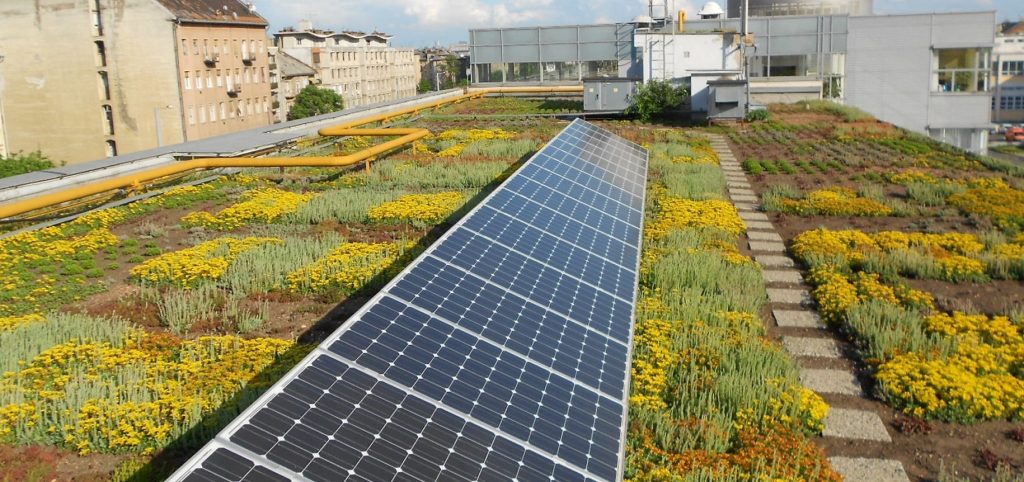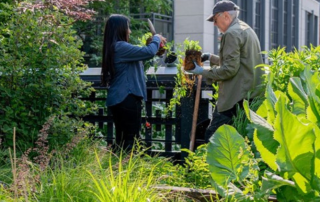A zöldtetők szerepe a városi csapadékvíz kezelésében
A modern városi környezetben a csapadékvíz kezelése egyre nagyobb kihívást jelent. Az egyre sűrűbben beépített területeken a víz természetes elvezetése akadályokba ütközik: a beton és aszfalt burkolatok miatt a csapadék nem szivárog el, hanem gyorsan lefolyik, gyakran túlterhelve a csatornarendszert. Az eredmény? Elöntött utcák, károk és csökkenő talajvízszint.
A Legyél Te is Esőmentő! kampány célja, hogy felhívja a figyelmet a városi csapadékvíz-gazdálkodás fontosságára, és megoldásokat kínáljon, például a zöldtetők alkalmazásával.

Mi az a zöldtető?
A zöldtető egy olyan tetőfelület, amelyet növényzettel fedtek be. Alatta réteges rendszer található, amely biztosítja a növények életfeltételeit, valamint a víz megtartását. Az ilyen tetők esztétikai és környezeti előnyeik mellett kulcsfontosságúak a csapadékvíz kezelésében is.
Hogyan segítenek a zöldtetők a csapadékvíz megőrzésében?
Hogyan lehetsz Te is Esőmentő?
A zöldtetők telepítése ma már nem elérhetetlen cél. Sok város kínál támogatást a kialakításukra, és a technológia is egyre megfizethetőbbé válik. Ha új épületet tervezel vagy a meglévő tetődet újítanád fel, fontold meg a zöldtető telepítését! Nemcsak a környezetért, hanem a saját jólétedért is sokat tehetsz.
Csatlakozz a Legyél Te is Esőmentő! mozgalomhoz, és válj aktív részévé a város fenntarthatóbb jövőjének!








